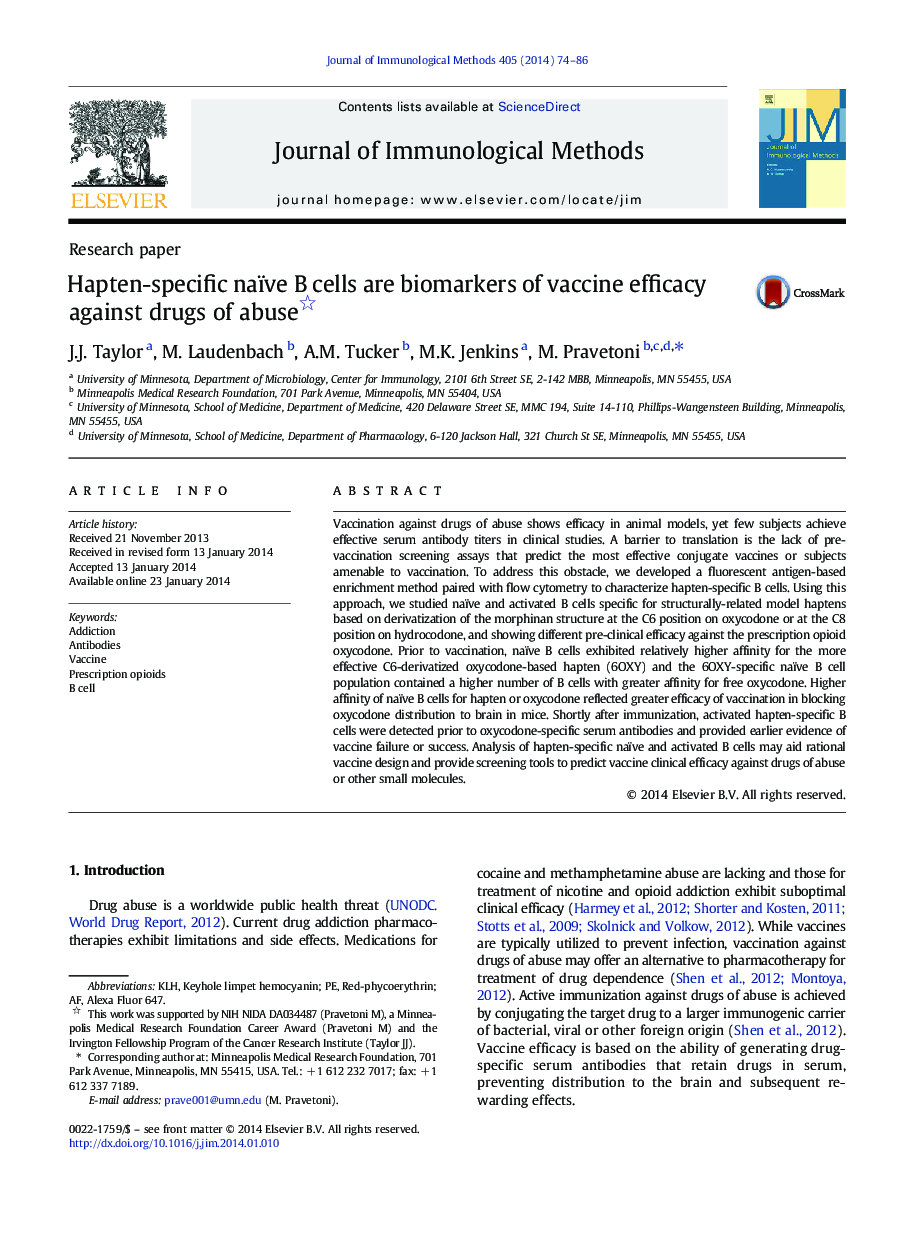| Article ID | Journal | Published Year | Pages | File Type |
|---|---|---|---|---|
| 8417792 | Journal of Immunological Methods | 2014 | 13 Pages |
Abstract
Vaccination against drugs of abuse shows efficacy in animal models, yet few subjects achieve effective serum antibody titers in clinical studies. A barrier to translation is the lack of pre-vaccination screening assays that predict the most effective conjugate vaccines or subjects amenable to vaccination. To address this obstacle, we developed a fluorescent antigen-based enrichment method paired with flow cytometry to characterize hapten-specific B cells. Using this approach, we studied naïve and activated B cells specific for structurally-related model haptens based on derivatization of the morphinan structure at the C6 position on oxycodone or at the C8 position on hydrocodone, and showing different pre-clinical efficacy against the prescription opioid oxycodone. Prior to vaccination, naïve B cells exhibited relatively higher affinity for the more effective C6-derivatized oxycodone-based hapten (6OXY) and the 6OXY-specific naïve B cell population contained a higher number of B cells with greater affinity for free oxycodone. Higher affinity of naïve B cells for hapten or oxycodone reflected greater efficacy of vaccination in blocking oxycodone distribution to brain in mice. Shortly after immunization, activated hapten-specific B cells were detected prior to oxycodone-specific serum antibodies and provided earlier evidence of vaccine failure or success. Analysis of hapten-specific naïve and activated B cells may aid rational vaccine design and provide screening tools to predict vaccine clinical efficacy against drugs of abuse or other small molecules.
Keywords
Related Topics
Life Sciences
Biochemistry, Genetics and Molecular Biology
Biotechnology
Authors
J.J. Taylor, M. Laudenbach, A.M. Tucker, M.K. Jenkins, M. Pravetoni,
